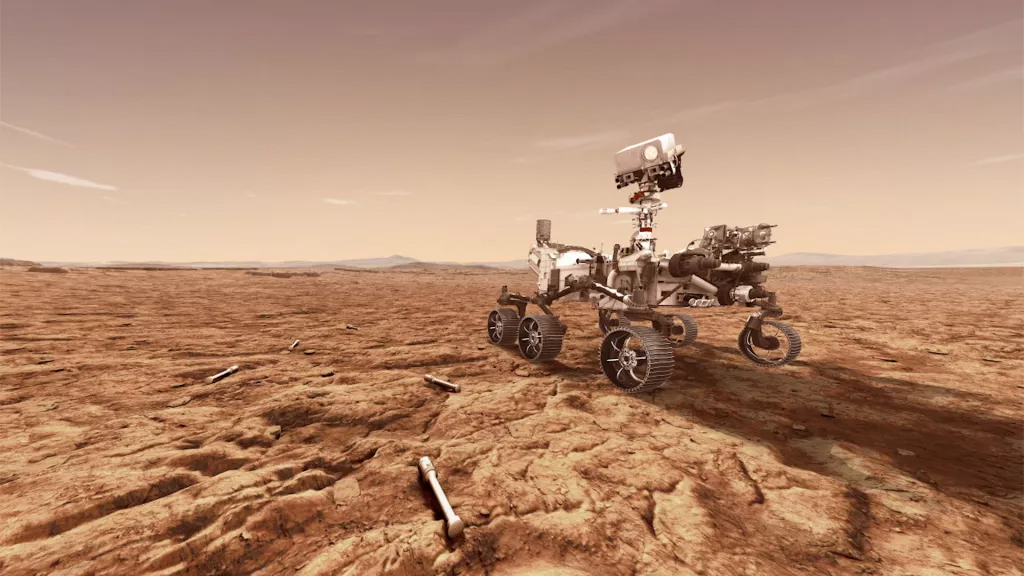NASA rover Perseverance survives death-defying plunge, lands safely on Mars
This was the most precise landing of all time.

NASA's rhinoceros-size Perseverance rover pulled off the most precise landing in Martian history Thursday (Feb. 18), touching down successfully in Jezero crater. The landing put the mobile robot laboratory in position to begin the hunt for signs of long-lost life in the ancient remnants of a river delta that once flowed through the region.
The 2,260-pound (1,025 kilograms) machine radioed home a series of short chirps during its meteoric plunge into the Martian atmosphere, indicating success during each of the complex maneuvers that were required to safely deposit its bulk on the surface. (Live Science detailed these maneuvers here.) The final stage of the landing involved a never-before-used robotic skycrane that guided the rover to a safe landing location and brought its plunge to a complete halt before lowering it 65 feet (20 meters) to the surface using cables. Relaying its signal through the Mars Reconnaissance Orbiter (MRO) satellite, the rover reported that it was on the surface and safe at 3:56 p.m. ET.
Related: 5 Mars myths and misconceptions
"Touchdown success! Perseverance has landed on Mars," said Swati Mohan, guidance and control operations lead for the mission and NASA's mission commentator on NASA TV's live stream during the event.
Book of Mars: $22.99 at Magazines Direct
Within 148 pages, explore the mysteries of Mars. With the latest generation of rovers, landers and orbiters heading to the Red Planet, we're discovering even more of this world's secrets than ever before. Find out about its landscape and formation, discover the truth about water on Mars and the search for life, and explore the possibility that the fourth rock from the sun may one day be our next home.
A video feed showed the Jet Propulsion Laboratory's entry, descent and landing team erupting with cheers when Perseverance sent its chirp of success, which arrived after a 15-minute delay due to the distance between Mars and Earth and a certain amount of lag from the MRO.
Perseverance hasn't yet sent any images home, though they should be coming in the following hours and days. NASA mounted cameras and a microphone on the descent vehicle and rover to record the landing. The large video files may take up to a week to fully upload across interplanetary space, NASA said.
Related: Photo tour of Jezero Crater: Here's where Perseverance will land on Mars
Sign up for the Live Science daily newsletter now
Get the world’s most fascinating discoveries delivered straight to your inbox.
Perseverance's life-hunting mission means that the rover is more or less a $2.7 billion nuclear-powered geologist, carrying a big toolbelt of instruments to precisely observe the compounds present in the crater's minerals, looking for signs of ancient life. It also carries a ground-penetrating radar to study the subsurface geology of the region and an experiment designed to produce oxygen from Martian carbon dioxide — a proof of concept of a technology that would likely be a key component of any future crewed Mars missions. The rover will also collect samples that NASA hopes to return to Earth using a future joint mission with the European Space Agency.
A pigeon-sized helicopter named Ingenuity rode to the surface attached to Perseverance's belly. It's also a proof-of-concept experiment, the goal being to achieve the first powered flight on Mars.
All of that will take time to get up and running, however. For now, NASA can breathe a sigh of relief that its big project wasn't destroyed on impact.
Originally published on Live Science.












